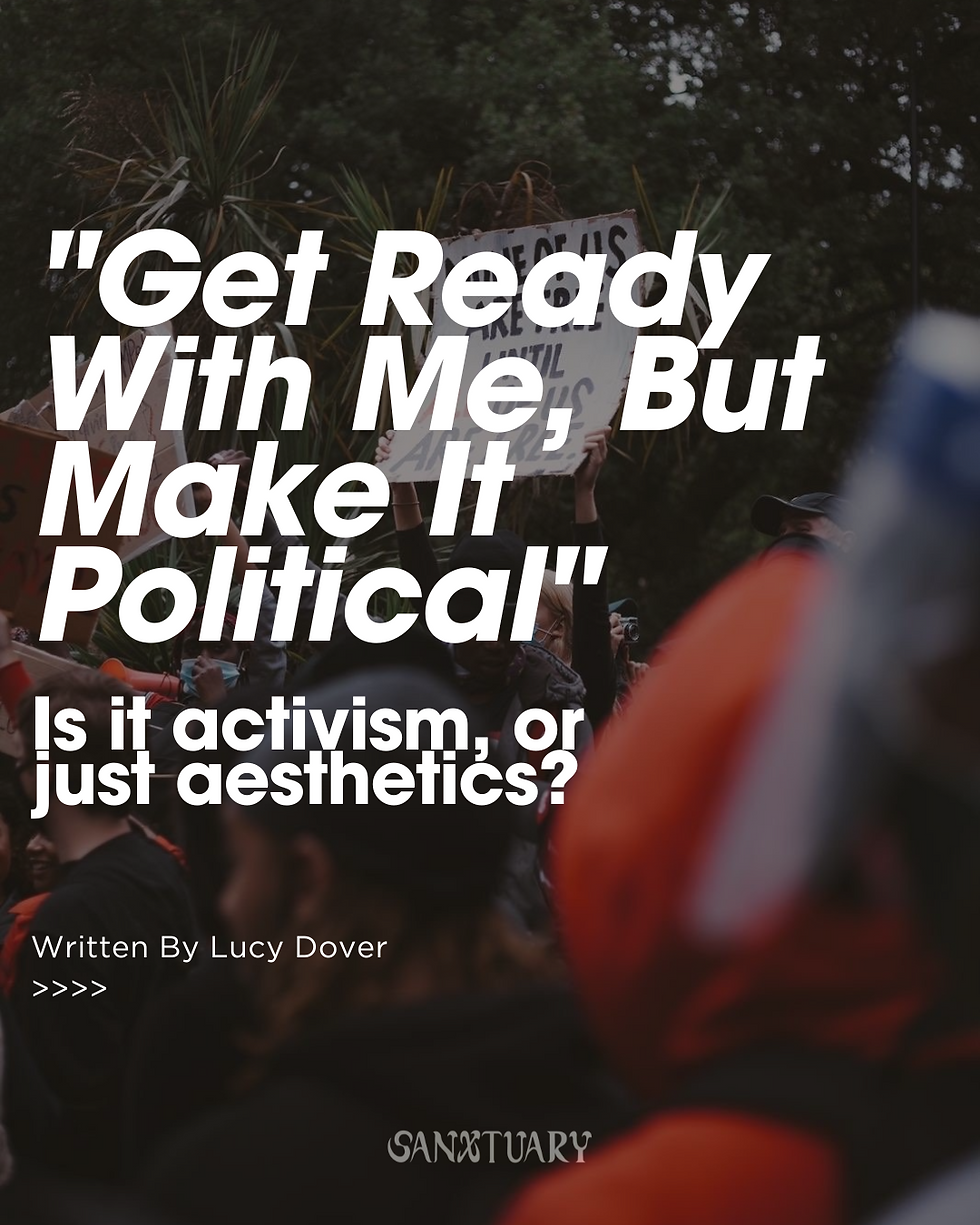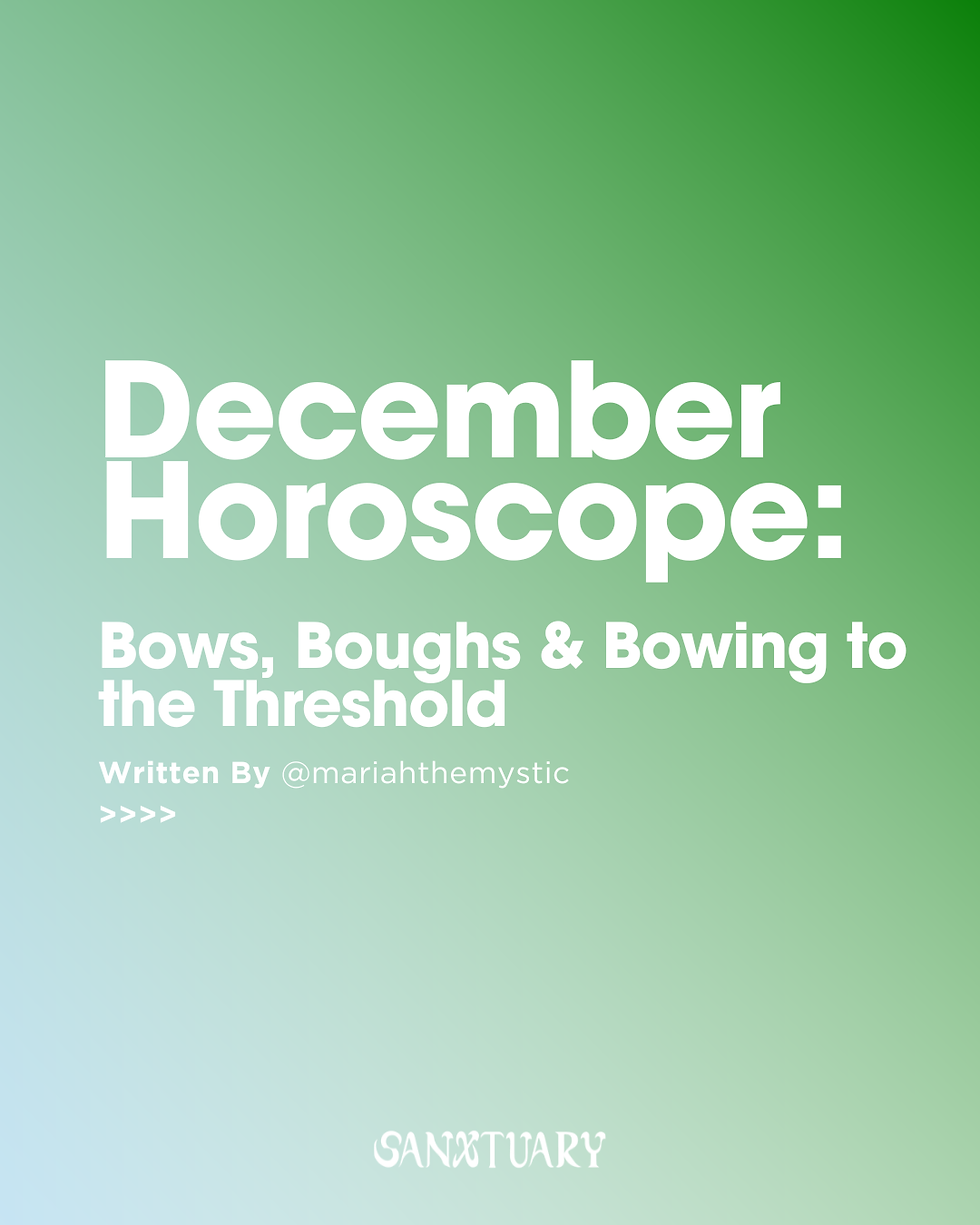"Get Ready With Me, But Make It Political"
- Lucy Dover
- Jul 21
- 4 min read
Is it activism, or just aesthetics?
Written by: Lucy Dover (@lucy_dover_)
I used to scroll past GRWM videos on TikTok without really thinking about them. They were filler content: slick edits, calming voiceovers, product recommendations from brands I couldn’t afford. I’d watch someone blend foundation or stick gems to their inner corners while talking about their weekend plans or what they’d ordered from Uber Eats. It was harmless, forgettable, and optimised for the algorithm. But lately, the tone has shifted.

Now, the same format is being used to talk about something else entirely. A creator speaks about their experience of being displaced while applying lip liner. Someone outlines their eyes while explaining the context behind a protest. One minute it’s “Get ready with me to run errands,” the next it’s “GRWM while I talk about trans rights.” The brushstrokes are the same, but the message underneath has changed. It’s personal. It’s political. And it’s everywhere.
It made me stop scrolling.
There’s something fascinating and slightly disorienting about the convergence of beauty content and political storytelling. On the surface, it looks like a contradiction. Why talk about protest while doing your skincare? Why unpack generational trauma in the same breath as a bronzer review? But maybe that’s the point. The intimacy of GRWM videos disarms people. You come for the aesthetic but stay for the context. The message sneaks up on you, somewhere between moisturiser and mascara.
It’s easy to be cynical about this. I’ve definitely had moments where I’ve questioned how much the format can actually hold. TikTok isn’t built for depth. It’s built for speed, engagement, and emotion. The algorithm doesn’t reward nuance. It rewards content that performs well within a specific formula. And often, that means the politics get flattened. The protest gets edited to fit the aesthetic. The message becomes just another visual hook in a long line of content.
Sometimes I wonder: are we actually listening to what these creators are saying, or are we just drawn in by the performance of it? Does the message stick, or does it get lost when we scroll?
That’s not to say these videos are empty. Far from it. The people making political GRWM content are often doing so with incredible thought and care. They’re using the tools available to them to speak, to educate, to reach people who might never encounter these conversations otherwise. And that reach matters. I’ve learned things through these videos that I wouldn’t have found in mainstream media. I’ve paused mid-scroll to reflect on what is going on in Palestine, to research the ICE protests in LA, to listen more closely to my Trans brothers and sisters.
Still, the tension remains. The platform makes it difficult to speak freely without facing consequences. Creators are shadowbanned, mass reported, or buried by the algorithm for saying too much, or saying it too clearly. And the labour of turning personal experience into content is rarely recognised for what it is. These videos are often framed as “raw” or “honest” while being repackaged, consumed, and quickly forgotten.
From the outside, it can look like empowerment. But it is also a performance. Not because the emotions are fake, but because the format demands structure. You have to be engaging even when you’re grieving. You have to be polished even when you’re angry. You have to educate, emote, and entertain, all within a one minute window.
That kind of packaging creates a strange bind. Use the format, and risk your politics being aestheticised. Reject the format, and risk being invisible.
What makes GRWM so effective is also what makes it complicated. It feels personal. Familiar. It isn’t a lecture or a manifesto. It’s one person, sitting in their bedroom, speaking directly to whoever’s listening. That kind of digital closeness is powerful, especially for those whose voices are often dismissed elsewhere. The format may be soft, but the subject matter often isn’t.
I don’t make this kind of content myself. I haven’t filmed a political GRWM or spoken on camera while doing my makeup. But I watch them. I save them. I think about them. And I’ve found myself asking what it means to engage as a viewer, especially as a white woman watching creators speak on systems I am not impacted by in the same way. Am I here to learn? To show solidarity? Or am I just passively consuming content shaped by someone else’s struggle?
These questions aren’t easy, but they matter. Especially when so much of what we now call “activism” online is about visibility. Virality. Aesthetics. GRWM videos don’t replace organising, protest, or policy. But that doesn’t mean they are pointless. Sometimes they’re an entry point. Sometimes they are a spark. Sometimes they help someone feel seen for the first time.
Not everything has to be revolutionary to be meaningful. Sometimes resistance is quiet. Sometimes it’s built through routine. Sometimes it comes with a skincare routine and a closing line like “OK, I’m ready.”
And sometimes, the most political thing you can do is refuse to disappear.






Comments